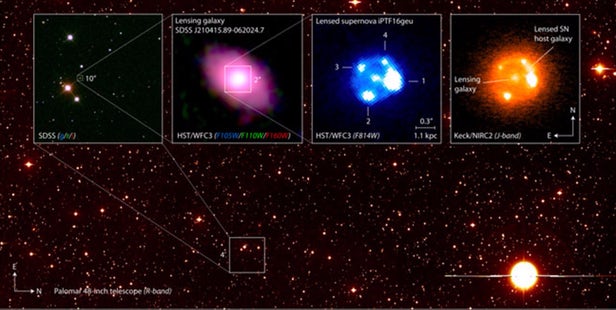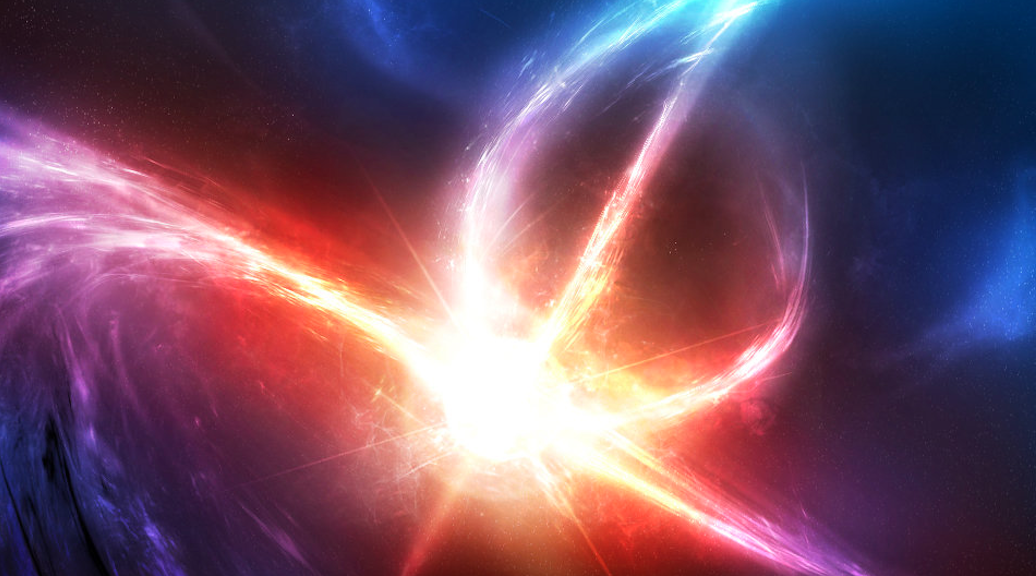Scientists at Lawrence Berkley National Laboratory (Berkley Lab) have just discovered a Type la supernova called iPTF16geu that exploded around four billion years ago. It located behind a galaxy two billion light years away that splits the star into four images in different parts of the sky. This supernova is the first of its kind to be identified by gravitational lensing and could help us better understand how the universe is expanding.
Astronomers like to study supernovae for many reasons. One particular class of supernova that receives a lot of attention, although rare, is Type la. These make up roughly one in every 50,000 supernovae discovered and are created when a white dwarf star orbits another star. The dwarf will keep drawing gas from the other star until eventually, it will build up before collapsing in on itself. Scientists like studying these supernovae because they could hold clues to figuring out the expansion rate of the Universe more accurately.
Gravitational lensing is a technique derived from Einstein’s Theory of General Relativity that states the more the mass the more bending there is. the So, light going past an object will be refracted in the same way as when passing through a lens. This effect is impossible to see in everyday life, but when looking at a large object such as a black hole or galaxy its much clearer to see. The way in which the supernova was discovered was through the use of the Intermediate Palomar Transient Factory (iPTF) situated at the Palomar Observatory in Southern California. It uses a wide-field camera that’s mounted on the Samuel Oschin Telescope in order to collect data then transmits it over to the Department of Energy’s (DOE’s) National Energy Research Scientific Computing Center (NERSC) at Berkley Lab.
The new technique is so successful that these types of discoveries are now being made daily opposed to one or two per month and is a huge breakthrough for scientists. September 5, 2016, marked the day the supernova iPTF16geu was discovered and although originally thought to be located around one billion light years away, it turns out it is, in fact, more like four times that. They also found another galaxy around two billion light years away that acted as a gravitational lens that magnified and split the image into four parts, helping to measure the expansion rate of the Universe. What makes it easier with Type la supernovae is they have the same luminosity so astronomers can calculate how bright they are and use this to calculate how far away they are also.

One they do know is that for Type la supernovae the explosion that occurs when the white dwarf hits a critical mass is always the same brightness, making them relatively easy to spot and use for measuring distances. Then, once you know the distance and can compare the light-travel times from lensing, you’ll have a good base to work from when calculating the expansion rate of the Universe. “We are just now getting to the point where our transient surveys are big enough, our pipelines are efficient enough, and our external data sets are rich enough that we can weave through the data and get these rare events,” says Danny Goldstein, a UC Berkley astronomer graduate student.
More News to Read











